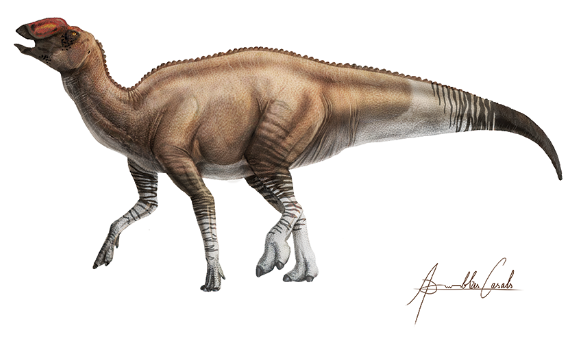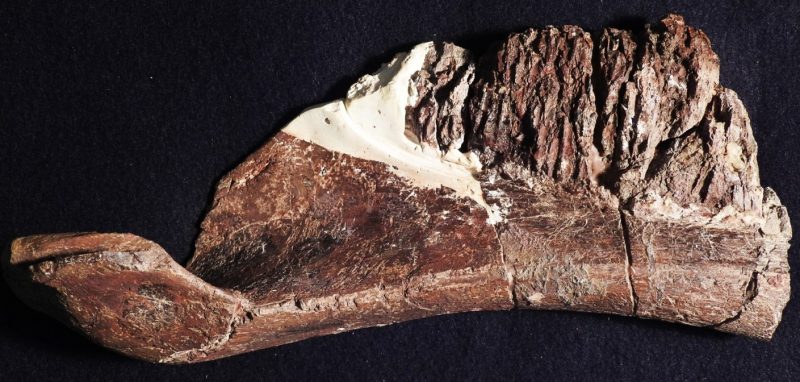
New species of dinosaurs – well, their fossils – continue to be discovered by scientists. Now, an unusual species of duck-billed dinosaur, a hadrosaurid, has been found, which lived 80 million years ago in southwestern Texas. The skull is the most complete yet discovered of a duck-billed dinosaur from Big Bend National Park.
The finding was announced by Albert Prieto-Márquez at the Catalan Institute of Palaeontology in Barcelona, and the peer-reviewed results were published in the Journal of Systematic Palaeontology on July 12, 2019.
The exquisite skull specimen reveals a a new genus and species of duck-billed dinosaur, and has been named Aquilarhinus palimentus. Its aquiline nose, curved like an eagle’s beak, and wide lower jaw, shaped like two trowels laid side by side, give it a unique appearance among the duck-billed dinosaurs. Prieto-Márquez explained the significance of the finding:
This new animal is one of the more primitive hadrosaurids known and can therefore help us to understand how and why the ornamentation on their heads evolved, as well as where the group initially evolved and migrated from. Its existence adds another piece of evidence to the growing hypothesis, still up in the air, that the group began in the southeastern area of the US.

The facial and cranial construction of the dinosaur suggests that it fed itself by shoveling loose, wet sediment to scoop up loosely-rooted aquatic plants from the tidal marshes of an ancient delta. It is one of the oldest and most primitive hadrosaurids found to date.
The skull and other bones had first been found in the 1980s by Tom Lehman at Texas Tech University, in rock layers on Rattlesnake Mountain in Big Bend National Park. However, some of them were stuck together, making analysis difficult. The arched nasal crest and unique jaw were discovered by research in the 1990s. At first, the bones were thought to belong to a hadrosaurid called Gryposaurus, but the more recent analysis showed that they were more primitive.
Aquilarhinus palimentus did not fit in with the main group of hadrosaurids, called Saurolophidae. The fact that it is more primitive is evidence that there were a greater number of lineages than previously thought. Bony cranial crests were common on the heads of hadrosaurids, and came in a variety of shapes and sizes. Some of these were solid, while others were hollow. The bony crest of Aquilarhinus palimentus, however, was simpler in structure, shaped simply like a humped nose. This crest was solid, providing evidence that all such crests evolved from a common ancestor, a hadrosaurid with a simple humped nose.


Hadrosaurids were the most common herbivorous – plant-eating – dinosaurs in the late Mesozoic Era. While there were some differences among species, these duck-billed dinosaurs generally look similar, where the front of the jaws would meet in a U-shape to support a cupped beak. Aquilarhinus palimentus is the first known species of this dinosaur to show significant differences in facial and cranial structure. Unlike other hadrosaurids, the lower jaws of Aquilarhinus palimentus met in a weird W-shape, which created a wide, flattened scoop. This would have been ideal for eating the loose aquatic plants in the marshes. As well as in North America, hadrosaurids were also common in Asia and Europe. Fossil evidence suggests that they had camel-like feet and stiff tails, and spent most of their time on land, but close to bodies of water. The cranial crests on some hadrosaurids are thought to most likely have served as resonating chambers, allowing them to make deep, loud sounds.
Bottom line: Scientists have discovered a previously unknown species of a duck-billed dinosaur that used to roam in what is now southwestern Texas. The skull is the most complete hadrosaurid skull ever found so far.











